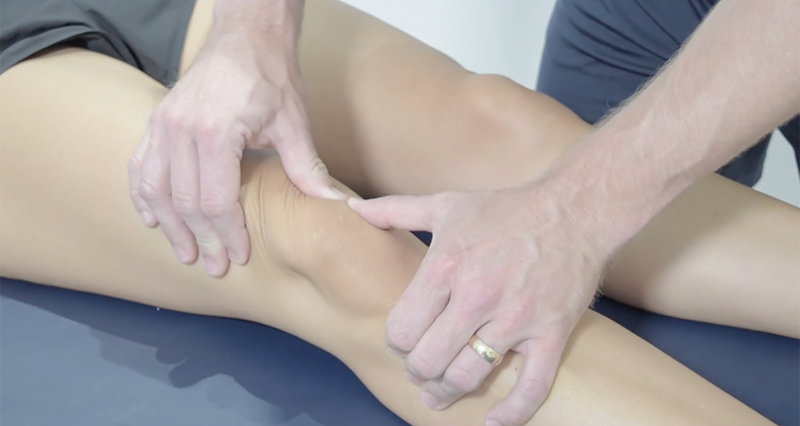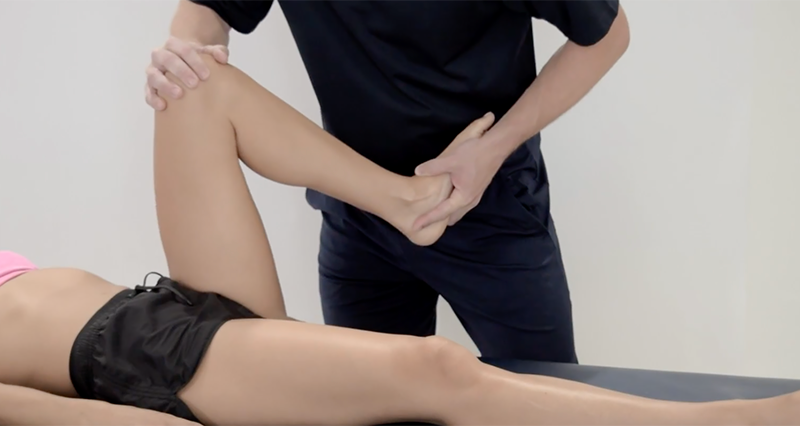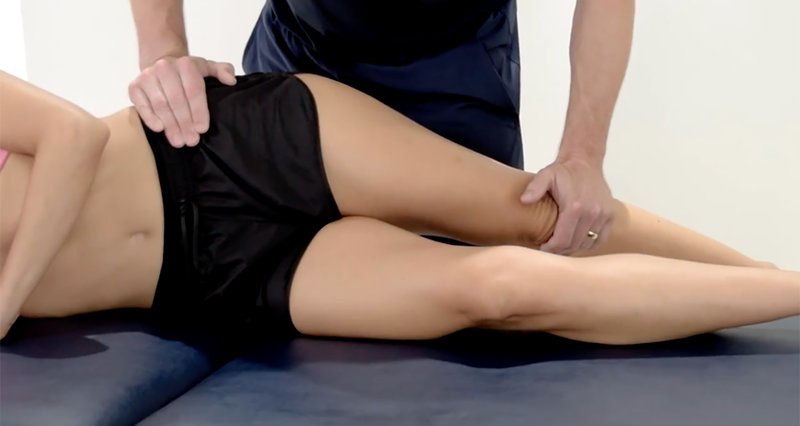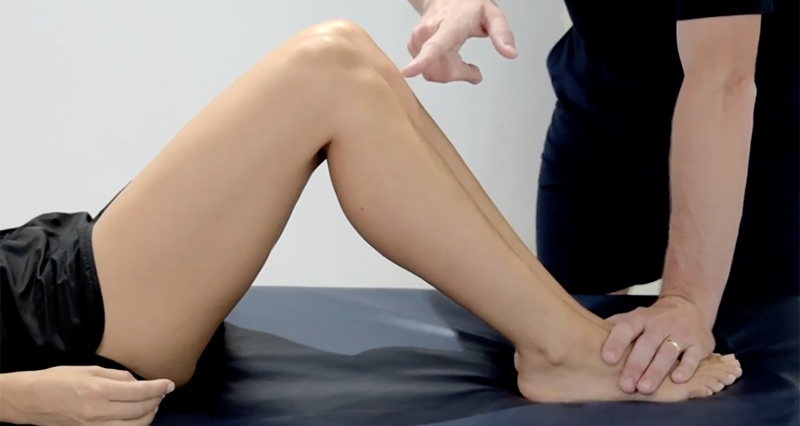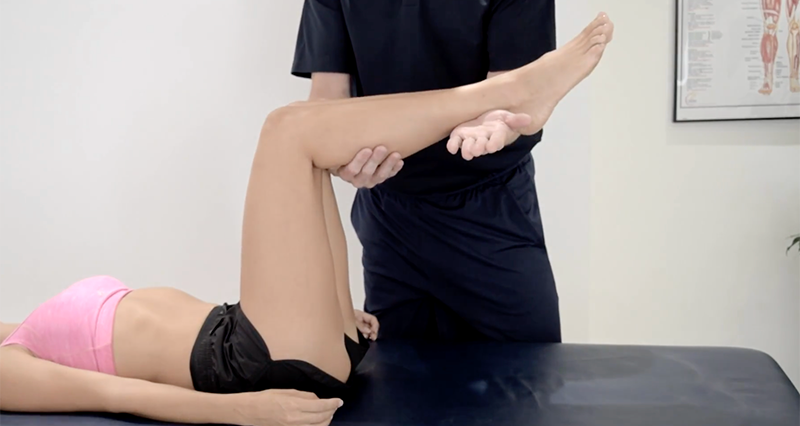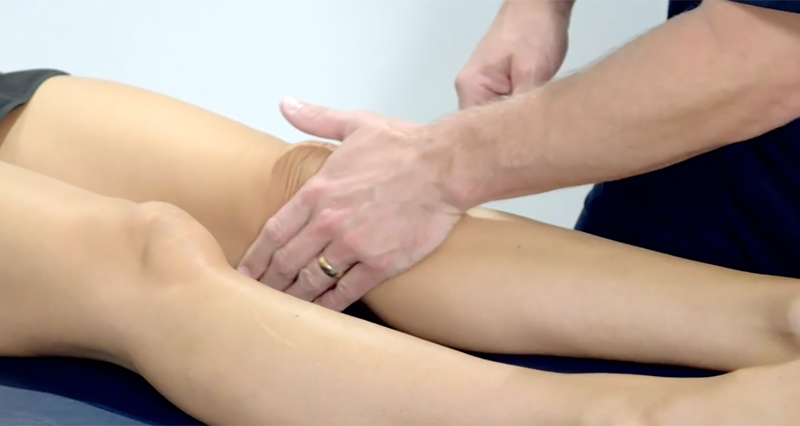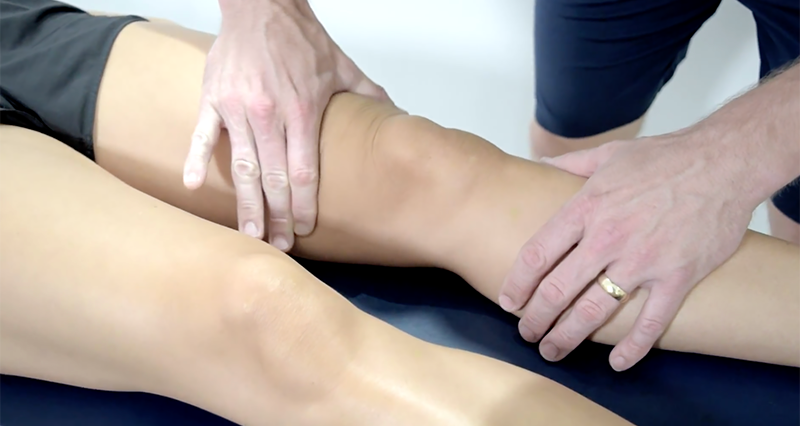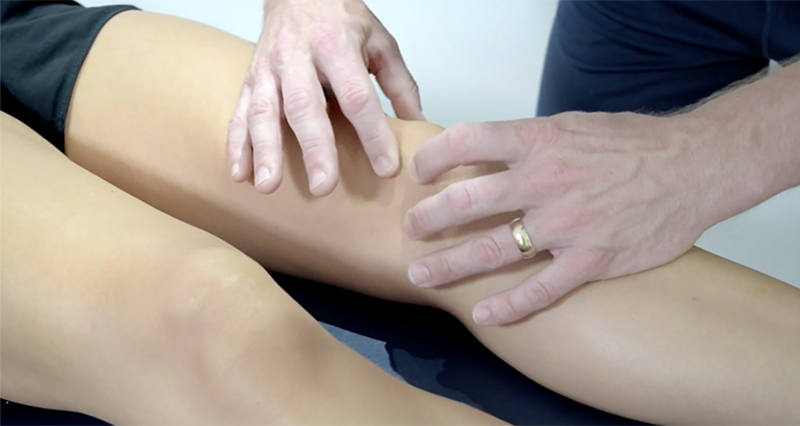The posterior drawer test evaluates the integrity of the posterior cruciate ligament (PCL) in the knee. Importantly, it is essential for diagnosing sprains in this ligament. Additionally, the PCL plays a vital role in stabilizing the knee. In particular, it prevents the tibia (shinbone) from moving too far backwards relative to the femur (thighbone).
What is a Posterior Cruciate Ligament Injury (Torn PCL)?
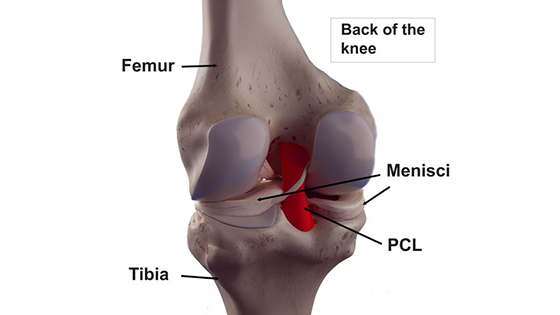
A torn PCL is a rupture (sprain) of the posterior cruciate ligament in the knee joint. One cause is an impact to the front of the knee which causes your knee joint to bend back the wrong way.
How to perform the posterior drawer test:
The patient lies on their back (supine position) with the knee in question bent at a 90-degree angle. Their foot rests on the examination table, held in position.
Sit or stand at the foot of the table, wrapping hands around the patient’s knee, placing thumbs on the tibial plateau (the flat upper surface of the tibia), and curling fingers around the back of the calf.
To conduct the test, push backwards on the tibia to apply a posterior force to the joint while stabilizing the femur with the other hand or forearm. This movement checks the PCL’s ability to prevent the tibia from moving backwards relative to the femur.

How to Identify PCL Injuries with the Posterior Drawer Test?
During the posterior drawer test, observe how much the tibia moves backwards. A healthy knee with an intact PCL shows minimal movement. Excessive movement suggests a possible PCL injury. Compare this movement to the unaffected knee; the difference in movement can indicate the injury’s severity.
Considerations
Interpreting the results of this test accurately requires experience and a good understanding of knee anatomy. Additionally, the posterior drawer test is often part of a comprehensive knee examination. Therefore, always consider results alongside the patient’s history, symptoms, and other physical examination findings.
